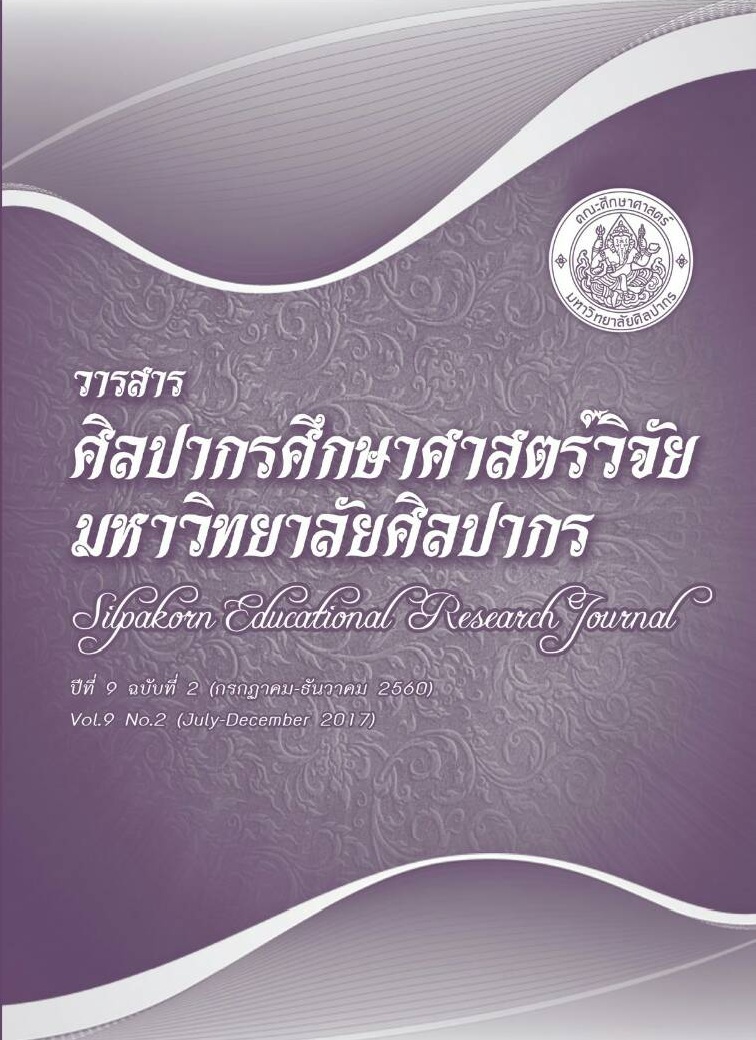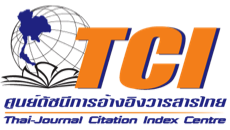การพัฒนารูปแบบการสอนคณิตศาสตร์สร้างสรรค์เพื่อพัฒนาผลสัมฤทธิ์ทางการเรียนและเสริมสร้างความคิดสร้างสรรค์ เรื่องการแก้โจทย์ปัญหา สำหรับนักเรียนชั้นประถมศึกษาปีที่ 1 (Development of Creative Math Teaching Model to Promote Solving Problem Skills and Enhance Creative Thinking of Prathomsuksa 1 Students)
คำสำคัญ:
การพัฒนารูปแบบการสอน, คณิตศาสตร์สร้างสรรค์, การแก้โจทย์ปัญหา, ความคิดสร้างสรรค์, Development of an Instructional Model, Creative Mathematics, Solving Problem Skills, Creative Thinkingบทคัดย่อ
บทคัดย่อ
การวิจัยครั้งนี้ มีวัตถุประสงค์ 1) เพื่อพัฒนาและหาประสิทธิภาพของรูปแบบการสอนคณิตศาสตร์สร้างสรรค์ 2) เพื่อศึกษาผลของการใช้รูปแบบการสอนคณิตศาสตร์สร้างสรรค์ โดยการเปรียบเทียบผลสัมฤทธิ์ทางการเรียน ก่อนเรียนและหลังเรียน และศึกษาความสามารถในการคิดสร้างสรรค์ของนักเรียน และ 3) เพื่อศึกษาความพึงพอใจของนักเรียนที่มีต่อการเรียนโดยใช้รูปแบบการสอนคณิตศาสตร์สร้างสรรค์ การวิจัยครั้งนี้ใช้รูปแบบการวิจัยและพัฒนา กลุ่มตัวอย่างคือ นักเรียนชั้นประถมศึกษาปีที่ 1 จำนวน 140 คน ผลการวิจัยพบว่า
1. รูปแบบการสอนคณิตศาสตร์สร้างสรรค์ มีขั้นการสอน 6 ขั้น คือ 1) ใช้รูปธรรม 2) นำปัญหา 3) พาให้คิด 4) พิชิตปัญหา 5) หาหลักเกณฑ์ และ 6) เจนวิชา มีประสิทธิภาพ 88.11/85.21
2. ผลการใช้รูปแบบการสอนคณิตศาสตร์สร้างสรรค์ พบว่า
2.1 นักเรียนชั้นประถมศึกษาปีที่ 1 ที่เรียนด้วยรูปแบบการสอนคณิตศาสตร์สร้างสรรค์ มีผลสัมฤทธิ์ทางการเรียนหลังเรียนสูงกว่าก่อนเรียน
2.2 นักเรียนส่วนใหญ่มีความคล่องในการคิด มีความคิดละเอียดลออ และมีความคิดยืดหยุ่น อยู่ในระดับปานกลาง มีความคิดริเริ่ม อยู่ในระดับพอใช้
3. ความพึงพอใจของนักเรียนที่มีต่อการเรียนโดยใช้รูปแบบการสอนคณิตศาสตร์สร้างสรรค์โดยรวม อยู่ระดับมาก
Abstract
This research aimed 1) to develop and find the efficiency standard criterion of the instructional model of Creative Mathematics, 2) to compare the achievement in Mathematics of student on addition and subtracting solving problems before and after the implementation of the Creative Mathematics Model and study the ability of the students’ creativity thinking from this instructional model and 4) to study the students’ satisfactions toward the instructional model of Creative Mathematics.
For the research and development process, the researcher used the efficiency standard criterion of the instructional model with the 140 samples of Prathomsuksa 1 students. The results were:
1. The research instrument was the Creative Mathematics Model and the learning achievement test, creative thinking test, and satisfaction questionnaire were administered for collecting data. The instructional model of Creative Mathematics had the average efficiency at 88.11/85.21.
2. The results of the student learning by using the instructional model of Creative Mathematics showed that:
2.1 The students after learning by using the instructional model of Creative Mathematics was statistically, significantly higher than before learning
2.2 Most of students had the elaboration, fluency and flexibility at the moderate level, the originality was at the fair level.
3. The students’ satisfactions toward the instructional model of Creative Mathematics in generally, were ranked at the high level.





